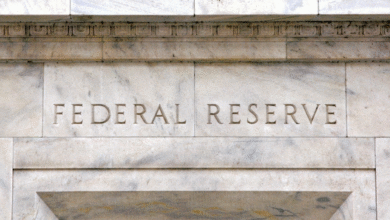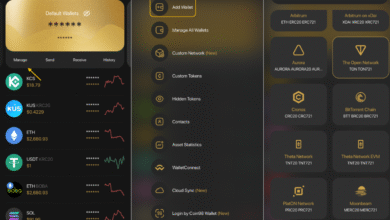Paper Bitcoin: Community Concerns Over Custody Providers

In the ever-evolving landscape of digital currencies, concerns about paper bitcoin have emerged as significant among investors and advocates alike. Paper bitcoin refers to the tokens that lack any real presence on the blockchain, residing instead as digital figures controlled by custodian providers. This concept raises alarms especially in the context of bitcoin custody, highlighting the risks associated with reliance on custodians who may engage in fractional reserve bitcoin practices. As the bitcoin market faces stagnation despite optimistic projections, these investment concerns become increasingly pertinent. The juxtaposition of soaring corporate acquisitions of bitcoin with the absence of corresponding market movements questions the integrity of transactions facilitated by these custodians.
The term ‘paper bitcoin’ represents a growing concern in the cryptocurrency sector, where individuals are wary of non-physical tokens that might not align with true ownership principles. These intangible representations of bitcoin, often managed by third-party custodians, can create uncertainty, particularly when discussions about bitcoin custody and fractional reserve practices arise. Investors are currently grappling with a landscape characterized by bitcoin market stagnation, as the disparity between reported corporate purchases and actual on-chain transfers raises questions regarding the legitimacy of custodial practices. Furthermore, the dialogue surrounding custodian providers bitcoin suggests a critical examination of how these entities manage and report their holdings, as these factors significantly influence investor confidence. Concern over these investment dynamics underscores the need for greater transparency in the cryptocurrency market.
Understanding Paper Bitcoin: The Risks of Custodian Providers
The term ‘paper bitcoin’ refers to claims of bitcoin that exist only in the ledgers of custodian providers, rather than on the actual blockchain. This concept raises serious concerns within the cryptocurrency community, particularly regarding the transparency and trustworthiness of these custodians. When companies choose to rely on custodian providers for their bitcoin holdings, they potentially expose themselves to the risks associated with fractional reserve practices. In a system where more claims to bitcoin are issued than the actual amount held, investors might find themselves in a precarious situation if these custodians cannot fulfill their obligations.
The relationship between paper bitcoin and the recent stagnation in the bitcoin market cannot be understated. As bitcoin prices failed to gain momentum despite numerous institutional purchases, the speculation surrounding the actual availability of bitcoin held by these custodians has become more prominent. If stakeholders feel uncertain about the integrity of their claims, this could lead to broader concerns regarding the validity of investments in the cryptocurrency space. Understanding how custodian practices can affect liquidity and market perception is crucial for potential investors.
The Impact of Fractional Reserve Bitcoin on Investments
Fractional reserve banking is a well-established concept in traditional finance, and its appearance in the bitcoin market as fractional reserve bitcoin raises significant investment concerns. When custodians operate by not holding the full amount of bitcoin they claim to possess, this could unsettle investors who expect their holdings to be backed entirely. In a market still reeling from volatility, this uncertainty can have palpable effects on both investor confidence and market performance. The apparent disconnect between purchases announced by institutions and the lack of price movement further aggravates these concerns, as it suggests that not all transactions may have the intended economic impact.
Moreover, the prevalence of fractional reserve bitcoin threatens the integrity of the market itself. If too much reliance is placed on custodians who may be engaging in these practices, a crisis of confidence could erupt among investors. The fear that custodians could fail to deliver actual bitcoins on demand could lead to a mass sell-off, as individuals and organizations scramble to liquidate their assets. In this landscape, ensuring that investment strategies also account for the practices of custodian providers is essential for risk management.
Navigating Bitcoin Custody: Trust and Transparency
In the face of growing concerns regarding bitcoin custody, trust and transparency have become paramount. Investors are increasingly seeking custodians who adopt practices that ensure secure and verifiable holdings. This demand drives companies to distinguish themselves by adhering to best practices, helping to rebuild confidence among users and investors alike. Without addressing the concerns tied to custodial practices and the existence of paper bitcoin, some custodial providers may struggle to maintain relevance in a competitive market.
Strategies for enhancing transparency could include providing on-chain verification, regular audits, and clearly disclosing asset holdings. As the landscape of bitcoin custody continues to evolve, custodians who can demonstrate their commitment to transparency are likely to foster greater investor trust, ultimately benefiting the broader cryptocurrency ecosystem. The need for prudent custodianship is underscored by the current market environment, where investors remain cautious and scrutiny around bitcoin ownership intensifies.
Analyzing Bitcoin Market Stagnation: Causes and Effects
Bitcoin market stagnation, characterized by minimal price movement despite significant institutional interest, is a phenomenon that has puzzled many analysts. Several factors could contribute to this stagnation, including the prevalence of paper bitcoin, investor hesitance, and global economic conditions. With the introduction of several new market entrants, many are questioning whether the influx of investment is real or simply based on speculative claims made by custodians and their reserve practices.
Additionally, the concern around bitcoin custody highlights the delicate balance between investor confidence and market activity. If individuals and institutions continue to distrust custodians or engage in speculative practices, the actual demand for bitcoin could falter, leading to prolonged stagnation. Understanding market dynamics in relation to custodian practices is essential for stakeholders aiming to navigate this unusual period and identify potential investments.
Bitcoin Investment Concerns: The Role of Custody and Trust
Investing in bitcoin carries inherent risks, and the growing dependency on custodian providers has escalated these concerns. Investors are scrutinizing the safety of their investments against indices that measure the legitimacy of custodial holdings. The potential for custodians engaging in fractional reserve bitcoin practices adds a layer of complexity to navigating these investment decisions. This evolving landscape requires investors to perform their due diligence and ensure that their holdings are backed appropriately.
In light of these concerns, many investors are focusing on pursuing alternative strategies, such as self-custody wallets, which allow individuals to maintain full control over their bitcoin assets. This trend reflects a growing demand for empowerment and trust, leading many to favor direct ownership rather than relying exclusively on custodial services. As the market matures, addressing these investment concerns will be key to fostering a more robust and reliable bitcoin ecosystem.
The Future of Bitcoin Custody: Evolving Practices
The future of bitcoin custody appears to hinge on evolving practices that emphasize accountability and transparency. As the conversations around paper bitcoin and fractional reserve concerns become more pronounced, custodians must innovate to meet the demands of a more discerning investor base. This shift may involve updating technological frameworks, offering improved security measures, and ensuring rigorous compliance with regulatory standards.
Moreover, industry-wide discussions about these practices signal a move toward greater standardization within the custody space. By establishing best practices that prioritize security and transparency, the bitcoin community can cultivate a healthier market where investor trust is bolstered. As these changes unfold, custodians who adapt quickly may gain a competitive edge, ultimately aligning with broader market trends that favor sustainability and reliability.
The Role of Institutional Investment in Bitcoin Market Dynamics
Institutional investment is paramount in shaping the current dynamics of the bitcoin market. With several large organizations making significant purchases, the expectation is that this influx will drive up the price of bitcoin and enhance its perceived legitimacy as a reserve asset. However, amid these positive expectations, the presence of paper bitcoin raises critical questions regarding the actual ownership and availability of the assets being traded. As institutions navigate their involvement, they must also consider the implications of relying on custodian providers.
Moreover, the actions of institutional players can influence broader market trends and sentiment. If large purchases do not translate into tangible assets on the market due to fractional reserve practices, underlying trust in the digital currency could suffer. This scenario underscores the importance of transparency and responsible custody practices among institutional investors wishing to maintain a favorable image in the bitcoin ecosystem.
Community Perspectives: Social Media Insights on Bitcoin Custody
The rise of social media as a platform for discussing bitcoin custody and associated concerns has opened up new avenues for community engagement. Users are sharing their opinions and experiences related to custodial practices, fostering a collective voice that can shape public perception. For instance, comments such as those from prominent figures underscore the unease surrounding custodian claims and the risks associated with not having direct control over bitcoin investments.
As these conversations unfold, the community’s collective scrutiny serves as a noteworthy counterbalance to traditional custodianship. By holding custodial providers accountable for their practices, the community helps ensure that transparency and trust remain at the forefront of market discussions. In turn, this engagement can contribute to a more informed investor base, better equipped to navigate the complexities surrounding bitcoin custody.
Unlocking the Potential of Bitcoin: Navigating Trust and Investment
Navigating the bitcoin landscape requires understanding the intricate relationship between trust, custody, and investment. As stakeholders seek to unlock the potential of this digital asset, addressing concerns related to custodial practices becomes paramount. With prolonged market stagnation, it is essential for both investors and custodians to explore ways in which they can foster mutual trust and transparency for the betterment of the ecosystem.
Fostering an environment of open communication and accountability could be vital in restoring investor confidence. Those who advocate for direct control over bitcoin and emphasize secure custody practices may encourage a paradigm shift in market dynamics that prioritizes integrity and genuine asset ownership. Ultimately, this approach may cultivate a healthier overall investment landscape for investors looking to capitalize on the future of bitcoin.
Frequently Asked Questions
What is paper bitcoin and how does it relate to bitcoin custody?
Paper bitcoin refers to the concept of Bitcoin that exists as ledger entries managed by custodian providers rather than being held on-chain. These custodians may not actually possess the physical bitcoins, leading to concerns about the true supply and custody practices, particularly when fractional reserve bitcoin practices are involved. This has raised alarms about the security and transparency of bitcoin investments.
What are the concerns regarding fractional reserve bitcoin and investment safety?
Fractional reserve bitcoin is a practice where custodians hold only a fraction of the actual bitcoin they claim to back. This raises significant investment concerns, as it implies that more paper bitcoin could be issued than there are physical bitcoins, jeopardizing the safety of investors’ assets and leading to potential market risks, especially during times of high demand.
How is the current bitcoin market stagnation connected to paper bitcoin?
The current stagnation in the bitcoin market is linked to the prevalence of paper bitcoin. As many investors rely on custodians who may engage in fractional reserve practices, there is skepticism about the actual liquidity and supply of bitcoin in the market. This creates uncertainty that can hinder potential price movements, leading to a disconnect between purchases and market performance.
What role do custodian providers play in the concerns about paper bitcoin?
Custodian providers are essential in managing bitcoin holdings for investors, but concerns have arisen regarding their practices, particularly if they engage in fractional reserve behavior. This can result in the issuance of paper bitcoin, where custodial firms might not hold the actual bitcoins as promised, creating risks for those investing through these platforms.
How can investors mitigate risks associated with paper bitcoin in their portfolios?
Investors can mitigate risks by opting for custodians who prioritize transparency and proper bitcoin custody practices. Additionally, holding private keys to their own bitcoins rather than relying solely on custodian providers can safeguard against potential issues related to paper bitcoin and fractional reserve systems, ensuring more direct control over their investments.
What steps can the bitcoin community take to address issues with paper bitcoin?
The bitcoin community can advocate for greater transparency and accountability from custodian providers, pressing for clearer disclosures regarding holdings and practices. Increased awareness and education about the implications of paper bitcoin and fractional reserve mechanics may empower users to make more informed decisions about their bitcoin investments.
| Key Points | Details |
|---|---|
| Paper Bitcoin Concerns | The cryptocurrency community is worried about custodians holding tokens that do not exist on-chain, referred to as paper bitcoin, especially given the stagnation in market prices. |
| Market Stagnation | Despite price increases and companies purchasing bitcoins, the market has failed to maintain an upward trend. |
| Impact of Custody Providers | Many companies depend heavily on custody providers, leading to speculation that they may not hold actual bitcoins. |
| Bitcoin for Freedom’s Commentary | A user on social media questioned the legitimacy of Bitcoin Reserve Companies that acquire vast amounts of bitcoin without full transparency. |
| Criticism from Riccardo Spagni | Former Monero maintainer implied that there could be issues with transparency around bitcoin holdings and criticized the lack of market reaction to large purchases. |
| Arkham’s Findings | Blockchain analysis has identified addresses tied to these holdings, sparking debate about the actual existence of purchased bitcoins. |
Summary
Paper bitcoin has emerged as a significant concern within the cryptocurrency community, highlighting the risks of custodians engaging in fractional reserve practices. As discussions intensify over the transparency and validity of these holdings, the importance of maintaining confidence in actual bitcoin ownership is paramount for the integrity of the market.




